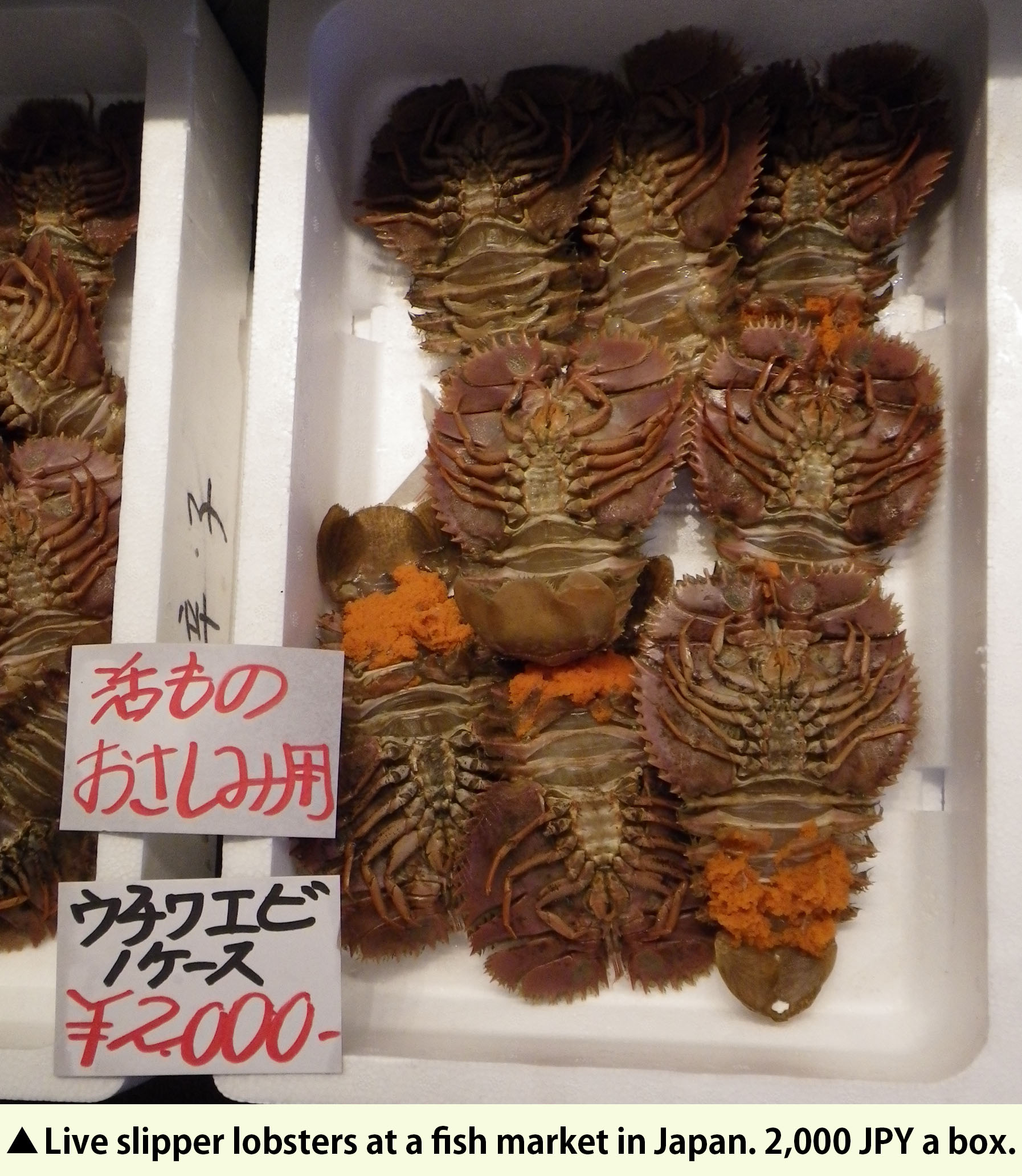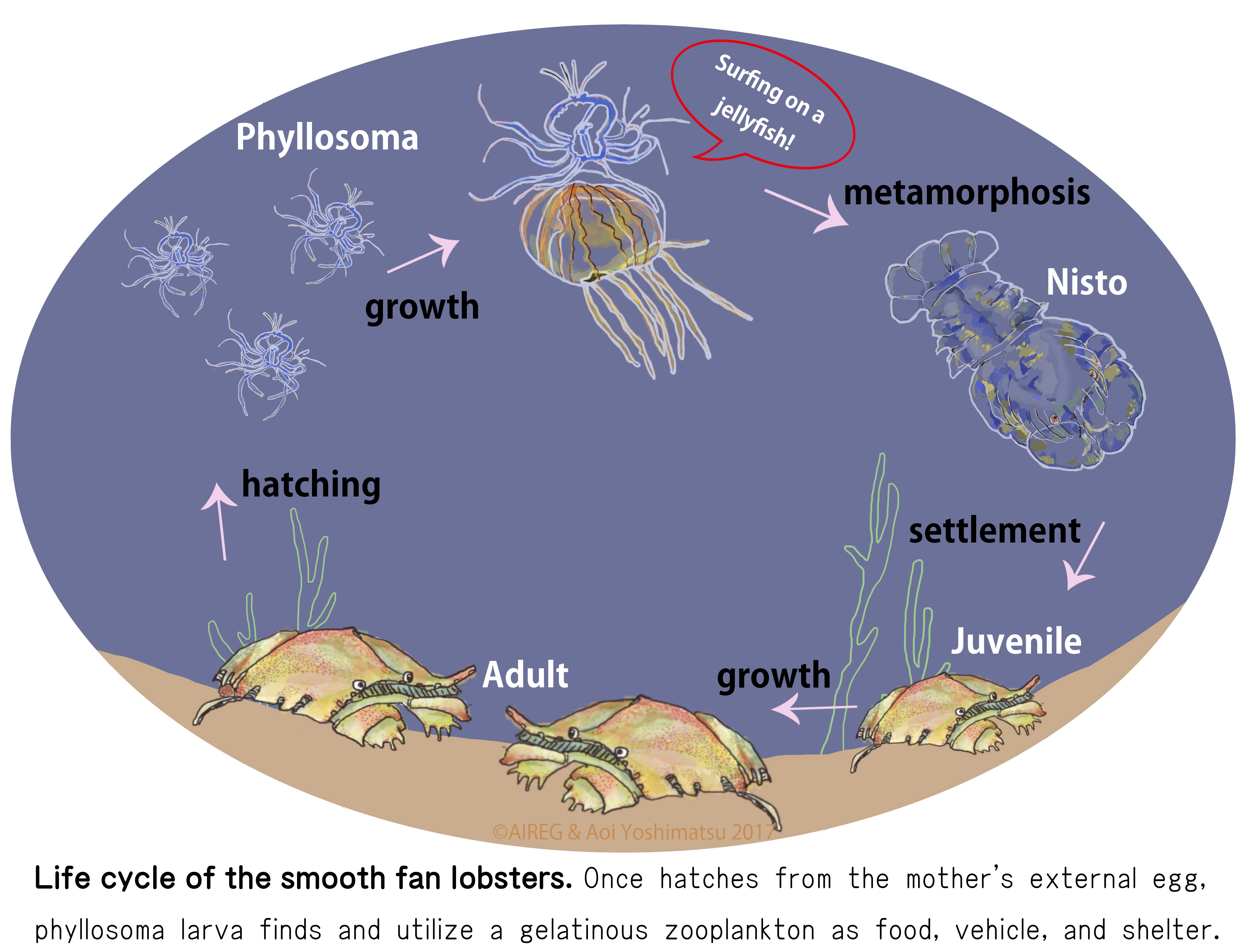Our current interest is larval morphology and behaviour of commercially important aquatic invertebrates.
Overview

Spiny and slipper lobsters are one of the most expensive seafood in the world. In Japan, the Japanese spiny lobster (an individual with 25 cm in body length has a weight of 500g approximately) may cost more than 20,000 yen per kg of Japanese during the New Year season. Slipper lobsters are also consumed locally in the western and the southern Japan, although they are not as popular as spiny lobsters. However, many people feel that the taste of slipper lobsters is not inferior to that of spiny lobsters. The price of slipper lobsters is higher than that of spiny lobsters depending on the season and size of the individual.
There has been an increased demand for both spiny and slipper lobsters especially in Asian countries including Japan. Recent studies show that the average body size of wild individuals tends to be reduced and populations of lobsters tend to be decreased around the world. These are possibly caused by overfishing. Fundamental researches on lobster aquaculture have been continuously carried out since the 19th century here in Japan. Nevertheless, the techniques for the commercial production of lobsters have not been established until now: both spiny and slipper lobsters are fully exploited from the natural resources.
Currently, we are conducting studies on the early life history of spiny and slipper lobsters. Our goal is to establish the basic techniques for larviculture in spiny and slipper lobsters, which will be useful for commercial lobster production in the future.
Specific projects
Culture technique for phyllosoma
A larva of spiny and slipper lobsters, so-called "phyllosoma" (phyllo = leaf-like, soma = body in Greek), has a flat body and long appendages. Once they hatch from the external eggs of adult females, phyllosomas drift in the open sea and prey on zooplankton. In particular, gelatinous zooplankton such as jellyfish and salps are preferred food. It is possible to observe a phyllosoma riding on a jellyfish during SCUBA diving! Based on the data obtained from both the wild and the laboratory, we are trying to develop the culture conditions which will enable phyllosomas to grow faster, larger and healthier. We conduct morphological analysis using microscopes, behaviour analysis using a video-recording technique, biochemical analysis, and genetic analysis.

Growth of spiny and slipper juvenile lobsters
In preparation
Life history traits of lobsters and other marine invertebrates
Many species of marine invertebrates such as shrimps, crabs, and molluscs lives on rock and/or the sea bed. Their larvae, however, usually drift in the sea as plankton. The larval form of these marine invertebrates normally differs from adult form. They also change their own forms as they develop. These may be the reason why it is difficult to identify the species of marine invertebrate larvae in plankton samples. But these samples actually allow us to have much useful information with regards to the biology and fisheries of these marine invertebrates. We identify the species and developmental stages of wild-caught marine invertebrate larvae using morphological and molecular analyses, and study their appearance and behaviour to understand their reproductive and dispersal strategies in the wild.
